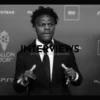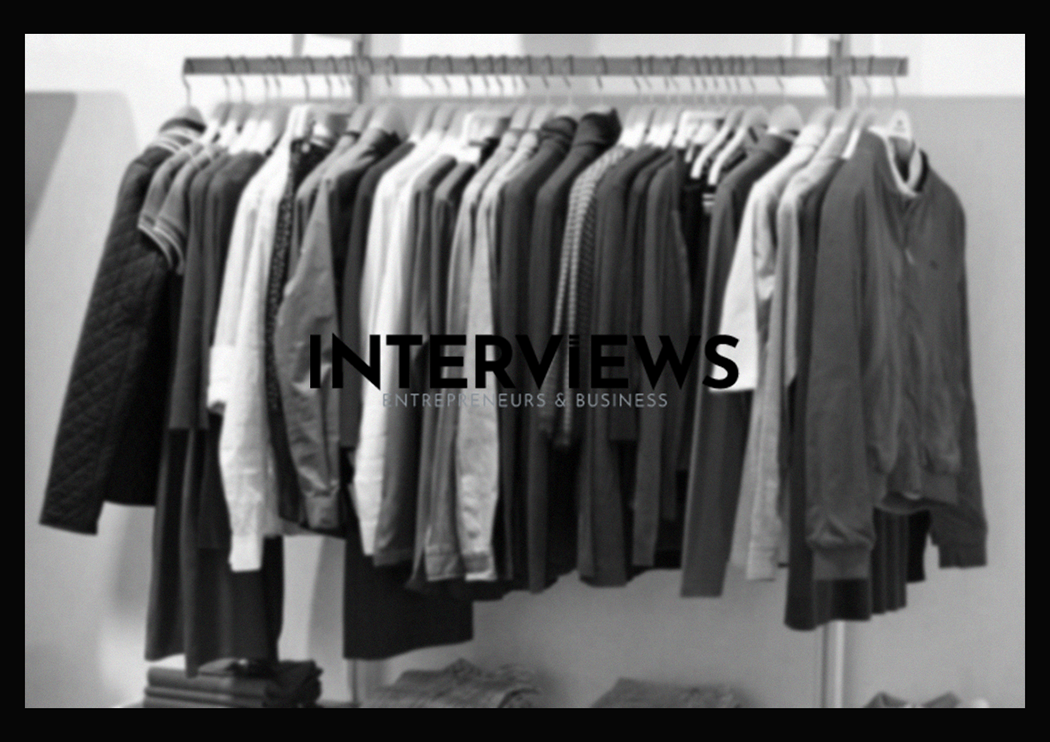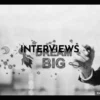Thinking of Stitching Together Your Own Clothing Line? Here’s the Thread You Need to Follow
So, you have the fashion bug, huh? Dream of seeing your designs worn by people? Starting an apparel line seems glamorous. It can be. Yet, it’s a business. Like any business, it has challenges. “Wait, I need a permit for this?” moments occur. Fear not! Here’s how to enter the apparel industry.
Cost of Launching Your Fashion Dream: From Pocket Change to Serious Investment
Let’s talk money. How much will this adventure cost? It’s not a one-size-fits-all answer. It depends on your ambition and wallet. Are we dipping toes, or diving into the fashion pool?
Scale Matters: Are You Thinking Boutique or Empire?
Think ordering coffee. Small, medium, or venti dreams each have different prices:
- Small-Scale/Print-on-Demand: Want to test without debt? Print-on-demand is your option. Launch with as little as $500. It’s like the cost of a nice handbag, but it could launch a brand! You pay only when someone buys something.
- Medium-Scale: Feeling more serious? You want to hold inventory and do marketing. For medium clothing lines, costs range from $1,000 to $5,000. It’s an investment in your future closet.
- Large-Scale: Ready for an empire? A large-scale business can easily hit tens of thousands, $25,000 to $50,000 or more. This is for serious players ready to compete with the big dogs.
Breaking Down the Bills: Where Does Your Money Actually Go?
Where does cash disappear to? Not magic. Here’s the list of expenses:
- Production Costs: Here, the raw materials meet your vision. Think fabrics (silk? denim?), trims (buttons, zippers), pattern making (making sketches into blueprints), samples (testing designs), grading (sizing patterns), prototyping (refining samples).
- Manufacturing Costs: Someone makes clothes. Manufacturing costs depend on location. Domestic production often costs more but is often easier to oversee. Overseas can be cheaper but involves complexity.
- Marketing and Website Costs: If a dress is designed in a forest and no one sees it, no sale. You need to shout! Budget for creating a website, marketing materials, and paid advertising.
- Inventory and Warehousing: Unless print-on-demand, you’ll need storage. Inventory costs cover garments. Warehousing costs hold them in your spare bedroom, rented unit, or fulfillment center.
- Legal and Business Costs: The less glamorous but crucial stuff. Registering your business, obtaining permits, and hiring legal or accounting help can add costs.
Stitching Success: Your Step-by-Step Guide to Apparel Line Glory
Ready to move beyond money talk into action? Here’s a roadmap for your entrepreneurial journey:
- Develop Fashion Design Skills: Obvious, right? You don’t need to be a fashion school graduate. Basic understanding of design principles and garment construction is essential.
- Create a Clothing Business Plan: “Plan to fail, or fail to plan.” A business plan outlines goals, target market, budget, and details. It’s the blueprint for your fashion empire (or boutique).
- Follow Fashion Trends: Keeping an eye on trends is crucial. Fashion is fickle, and trends change fast. Stay ahead of the curve to create desirable pieces.
- Build a Strong Brand: More than a logo. It’s your clothing line’s personality. What do you stand for? Who are you reaching? A strong brand makes you memorable.
- Design and Develop Your Clothing Line: This is where the magic happens! Sketch designs, choose fabrics, create samples, refine. It’s trial, error, and design brilliance.
- Source Fashion Fabrics or Design Your Own: Fabric is clothing’s soul. Will you source ready-made fabrics or design your own prints? Quality and suitability matter.
- Set Up Production and Manufacturing: Decide how and where clothes will be made. Local manufacturer, overseas factory, or DIY for small batches? This impacts cost and quality.
No Cash, No Problem? Launching Your Clothing Line on a Shoestring
Broke but bursting with ideas? Good news! You don’t need a trust fund to launch a clothing line today. With savvy, hustle, and creativity, you can start with limited funds. Let’s explore the ‘bootstrap’ toolkit:
Brand Building on a Budget: Making a Mark Without Breaking the Bank
- Market Research: Before you design, know your customer. Identify your niche. Are you designing for eco-conscious millennials? Luxury-loving baby boomers? Understand their preferences. Research is free!
- Brand Identity: Craft a unique brand identity. This includes brand name (catchy!), logo (simple), and aesthetic (minimalist or bohemian?). DIY a logo with free tools to save cash.
- Business Plan: Even without money, a business plan is crucial. Outline your business model, target audience, and marketing strategies. It’s your roadmap to success.
Online Oasis: Your Website and Social Media as Free Marketing Machines
- Social Media: Free marketing! Create engaging content where your target audience hangs (Instagram, TikTok). Build community and showcase designs.
- Website: A basic website adds legitimacy. A simple site acts as your storefront, showcasing your brand. Start affordably; upgrade as you grow.
- Content Marketing: Become a fashion guru! Share valuable content related to fashion and your message. Blogs and style guides attract customers organically. Content is king!
Smart Production: Inventory-Free and Wallet-Friendly Methods
- Print-on-Demand: Goodbye unsold inventory! Partner with print-on-demand services. They create products when ordered—zero inventory!
- Dropshipping: Even less hands-on! Find suppliers who ship directly to customers. You focus on marketing, they handle shipping.
- Shipping and logistics can be simple. Less hassle, less upfront investment.
- Freelance Designers: Design-challenged? No problem! Hire freelance designers to help if you lack skills. Websites like Upwork and Fiverr are full of talent available for hire at reasonable rates.
Marketing Magic: Spreading the Word Without Spending Big
- Content Marketing: This is very important. Create valuable and engaging content to attract customers. Focus on blog posts, style guides, videos – content that addresses problems and entertains.
- Social Media Marketing: Free and effective. Use social media such as Instagram, TikTok, Pinterest to promote your brand. Run contests, engage with followers, use suitable hashtags – increase your visibility!
- Influencer Marketing: Leverage the power of influence. Work with relevant influencers (micro-influencers can be more affordable and relatable). Send them free clothes and ask them to promote your brand – reach a larger audience without costly ads.
- Email Marketing: Build your audience list! Create an email list (offer discounts for sign-ups). Email marketing is direct, personal, and highly effective for promoting new products and special offers.
Legal Lowdown: Keeping it Legit Without Lawyers’ Fees (Almost)
- Business Structure: Sole proprietorship, LLC, S-corp – a mix of options! Research different business structures to choose what fits best. Starting out, a sole proprietorship might work, but think about an LLC for liability protection as you expand.
- Legal Advice: Well, maybe *not entirely* lawyer-free, but smart initial advice can save you money. Consult with a lawyer (even a brief consultation) to cover all legal requirements – registration, contracts, etc. Prevention is cheaper than fixing issues later.
Pricing it Right: Making Money Without Pricing Yourself Out
- Cost Analysis: Know your costs! Analyze production costs (even in print-on-demand, there are costs). This is crucial for pricing strategy. Don’t guess; calculate.
- Profit Margins: You want profit, right? Factor in a proper profit margin to secure profitability. Aim for industry standards, but be realistic about what the market will pay.
- Pricing Strategies: Value-based or cost-plus pricing? Explore different pricing strategies. Are you a luxury brand (value-based) or aiming for affordability (cost-plus)? Your pricing communicates your message.
Customer is King (Especially When You’re Starting Small)
- Excellent Customer Service: Happy customers return (and refer friends!). Provide prompt and helpful service to build a good brand reputation. Be responsive, be helpful, be human.
- Customer Feedback: Hear your customers! Solicit and respond to feedback. Use feedback to enhance products and services. Customer insights are valuable and free!
Pro-Tips for Triumph: Little Things That Make a Big Difference
- Patience and Persistence: Great brands take time to develop. Building a successful clothing line requires effort. Expecting quick success is unrealistic. Patience is a virtue in fashion.
- Consistency: Stay relevant! Regularly post and promote your brand to stay in your audience’s mind. Consistency builds brand recognition and keeps engagement high. Fashion is a marathon.
- Networking: It’s more than knowledge; it’s connections. Connect with entrepreneurs and industry pros. Attend online events, join fashion communities, network extensively. Collaborations can be very beneficial.
- Creativity: Be distinctive! Differentiate yourself with a unique brand identity and innovative products. Fashion thrives on originality. Dare to stand out.
- Using Free Tools: Take advantage of free resources! Utilize online tools for design (Canva), marketing (Hootsuite free), website building (WordPress), and more. Lots of free help exists – use it wisely.
Need-to-Know Nuggets Before You Dive In
Before diving in, let’s share vital insights. These fashion industry tips can prevent headaches down the road:
LLC: Your Business Shield Against Fashion’s Uncertainty
- Protection from personal liability: Very important. Without an LLC, personal assets (house, car, savings) can be at risk if the business fails. Forming a limited liability company (LLC) shields personal liability for business debts. Consider this essential.
Profit Potential: The Key to Apparel Margins
- Profit margins typically range from 40% to 60% for retail: The fashion business can be profitable! Profit margins in clothing, especially retail, usually range from 40% to 60%. So for every revenue dollar, you could keep 40 to 60 cents as profit (prior to expenses). Aim for these healthy margins!
Budget Reality Check: Actual Cost of Starting
- Can range from ₹5 lakh to ₹10 lakh: In Indian Rupees, launching a clothing brand could cost about ₹5 lakh to ₹10 lakh. This estimate covers inventory (if not print-on-demand), staff (if hired), operating costs (rent, utilities, marketing), and more. Adapt to your currency, but this is a general guideline. Print-on-demand and dropshipping can lessen upfront costs.
Collection Size: Begin Small, Dream Big (But Not Too Big)
- 3-8 styles for the first womenswear collection: Avoid overwhelming yourself. If starting with womenswear, experts suggest 3 to 8 styles in your initial collection. Focus on quality, manage inventory, and gauge market response. Each style can have different colors for variety without excess.
Name Game: Legalizing Your Brand Identity
- Registering Clothing Brand Name: Definitely crucial! You must register your clothing brand name. This secures your brand identity and prevents others from using it, enabling brand recognition free from legal issues. Think of it as claiming your space in fashion.
Brand Therapy: Building an Impactful Brand
Brands give clothes meaning. Branding transforms garments into desires through its essence. Let’s explore brand building:
Identity Check: Who Are You?
- Mission and Values: What’s your brand’s purpose? What drives your actions? Are you focused on sustainability, body positivity, luxury? Clarify your mission and values; consider them guiding stars.
- Target Audience: Who are you dressing? Understand your audience’s needs and wants. Knowing your target audience is vital. Age, lifestyle, values – develop a detailed picture of your ideal customer.
- Brand Personality: If your brand was a person, who would they be? Decide on voice and tone (playful, serious, authoritative). Fun and quirky? Sophisticated? Your personality determines communication style.
- Unique Selling Proposition (USP): What’s your unique edge? Identify what differentiates your brand from competitors. Unique designs? Sustainable materials? Build your USP and promote it widely.
Story Time: Crafting a Relatable Narrative
A good story appeals to shoppers. Create a story that conveys your brand’s origins, mission, and values. How did it start? What drove you? Stories connect brands with customers emotionally, enhancing relatability and memorability.
Look & Feel: Consistent Visuals and Tone
- Brand Voice: How does your brand *communicate*? Select language, tone, and style for your audience. Formal or casual? Witty or serious? Maintain consistency across platforms.
- Visual Identity: What’s your brand *appearance*? Design a logo, color scheme, typography, and visuals representing your brand. Think about effective brand images like Apple, Chanel, or Nike that convey essence immediately.
- Brand Style Guide: Consistency matters in branding. Create a document with visual and verbal style guidelines.
- To ensure consistency across all platforms. This style guide is your brand bible. It helps everyone on your team (or just you, at first!) stay on brand.
Brand Everywhere: Consistency is Key
Your website is your digital storefront. It should reflect your brand’s identity and style. From the color scheme to font choices to imagery, everything must scream *your brand*. First impressions matter online.
Brand in Action: Living Your Brand Values
Branding involves action, not just logos and slogans. Ensure all customer interactions reflect your brand’s values and personality. From customer service emails to social media responses, each touchpoint reinforces your brand promise.
Selling Spots: Where Will Your Clothes Find Their Fans?
You have fabulous clothes and a killer brand. Where will you sell them? The digital world offers many options. Traditional brick-and-mortar isn’t totally off the table (though online is usually the starting point):
- Amazon Storefront: Use the retail giant! With an Amazon storefront, create an immersive shopping experience for your clothing brand. Amazon provides massive reach and infrastructure. Think of it as setting up a shop in a mega-mall, but online.
There are many other platforms too, like your own e-commerce site (Shopify, Squarespace), Etsy (if it matches your style), ASOS Marketplace, and social media selling through Instagram Shopping and TikTok Shop. Choose platforms that match your target audience and brand aesthetic.
Fabric Quest: Sourcing the Soul of Your Style
Fabric means more than cloth; it defines your creations. Sourcing fabrics is key. Doing it well can break your clothing line. Here are fabric sourcing fundamentals:
Know Your Needs: What Fabrics Fit Your Fashion Vision?
- Design Requirements: What clothes are you making? Identify fabrics best for your line’s aesthetic, target market, and use (e.g., durable materials for activewear, soft fabrics for loungewear). A summer dress needs different fabric than a winter coat. Design dictates fabric choice.
- Fabric Construction: Beyond just “cotton” or “silk,” investigate further. Learn about fabric types, weaves, and finishes for informed decisions. Poplin vs. twill? Jersey knit vs. woven? Understanding fabric construction affects drape, durability, and feel.
- Quality Standards: Don’t compromise on quality. Establish quality standards for performance, durability, and sustainability. Cheap fabric can ruin even the best design. Set quality benchmarks early.
Supplier Safari: Hunting Down the Best Fabric Sources
- Online Suppliers: The internet helps! Explore online platforms specializing in fabric sourcing. Sites like Alibaba, Fabric.com, and others offer various fabrics, but due diligence is crucial.
- Market Expos and Trade Shows: Get hands-on! Attend events to see fabric samples and meet suppliers. Trade shows reveal new fabrics and build relationships.
- Mills: Source directly! Consider fabric mills, but beware of potential minimum order quantities (MOQs). Mills offer better pricing for bulk orders, but MOQs can be high for startups.
- Distributors and Agents: Middlemen can help! Use fabric distributors and agents for access to a wider range of fabrics. They can save you time, but add cost.
- Local Fabric Markets: For smaller quantities and unique finds. If in Los Angeles, check local markets for diverse options. Local markets hold great treasures for unique fabrics, especially for small runs.
Supplier Scorecard: Judging Quality, Ethics, and Your Wallet
- Quality: Non-negotiable! Choose suppliers with high-quality fabrics that meet your standards. Request samples, test for durability, and never settle for subpar fabric.
- Sustainability: Important to consumers. Consider suppliers that prioritize sustainable practices and ethical sourcing. Organic cotton, recycled fibers, fair labor practices – sustainability differentiates your brand and is a responsible choice.
- Pricing and Lead Times: Budget and timelines matter. Negotiate competitive prices and reasonable lead times for fabric delivery. Get multiple quotes and factor in shipping time.
- Minimum Order Quantities (MOQs): Startup-friendly? Understand MOQs required by suppliers and ensure they fit your production needs. High MOQs can hinder small brands.
- Sampling: Evaluate before you commit! Request fabric samples to check quality and ensure they meet expectations. Always get samples before placing bulk orders.
- Supplier Relationships: Build bridges! Foster strong supplier relationships for a reliable supply chain. Good relationships lead to better communication and smoother transactions.
Sourcing Smarts: Direct vs. Agent – Which Path to Pick?
- Direct Sourcing: Cut out the middleman? Buy fabric directly from mills to lower costs and control the supply chain. Direct sourcing can save money but requires managing relationships.
- Agent or Distributor Sourcing: Delegate work? Use agents or distributors for wider fabric access and streamlined sourcing. They simplify sourcing but add costs. Weigh pros and cons based on resources.
Fabric Roadmap: Planning Your Procurement Path
- Create a comprehensive fabric sourcing plan: Don’t wing it! Outline requirements, identify suppliers, and establish timelines. A fabric sourcing plan keeps you organized, ensures timely delivery, and helps avoid production delays.
Fashion Flavor Profiles: Decoding Different Clothing Line Categories
The fashion world has many landscapes. Understanding categories helps position your brand and target markets. Let’s break down the categories:
Price Point Playbook: Luxury to Fast Fashion – Where Do You Fit?
- Luxury: The crème de la crème. These brands focus on high-end materials, craftsmanship, and exclusivity. Examples: Gucci, Chanel, Dior, Louis Vuitton. Luxury means aspiration and the ultimate in quality.
- Premium: Luxury-lite. These brands prioritize quality and design at a lower price point. Examples: Calvin Klein, Ralph Lauren, Tommy Hilfiger. Premium offers accessible luxury for aspirational buyers.
- Mid-Tier: Balanced quality. These brands offer quality, style, and affordability to a broad clientele. Examples: Zara, H&M, Forever 21. Mid-tier means mass-market fashion focusing on trend.
- Fast Fashion: Trend tornado. These brands quickly produce trendy clothing, often sacrificing quality. Examples: Shein, Boohoo, ASOS. Fast fashion caters to immediate trend demands.
Style Spectrum: Athleisure to Ethnic – Finding Your Fashion Tribe
- Athletic/Activewear: Style meets performance. Brands created for fitness activities focus on performance. Examples: Nike, Adidas, Lululemon. Athleisure thrives driven by health trends.
- Casual: Everyday chic. These brands offer comfortable clothing with relaxed styles. Examples: Levi’s, Abercrombie & Fitch, Free People. Casual wear embodies effortless style for daily life.
- Formal/Business: Sophisticated design. Brands designed for professional occasions emphasize tailored fits. Examples: Brooks Brothers, Hugo Boss, Theory. Formal wear means polished attire.
- Ethnic/Cultural: Heritage celebration. These brands utilize specific traditions, showcasing unique patterns. Examples: Biba, Anthropologie. Cultural fashion celebrates diversity.
- Sustainable/Ethical: Conscious fashion. These brands emphasize environmentally friendly production practices. Examples: Eileen Fisher, Patagonia, Reformation. Sustainable fashion reduces environmental impact.
Phew! That’s a lot of information to digest. Hopefully, this equips you to launch your apparel line. Remember, launching a clothing brand is a marathon, not a sprint. Be patient, persistent, creative, and most importantly, genuinely you. Now go forth and fashion your future!





